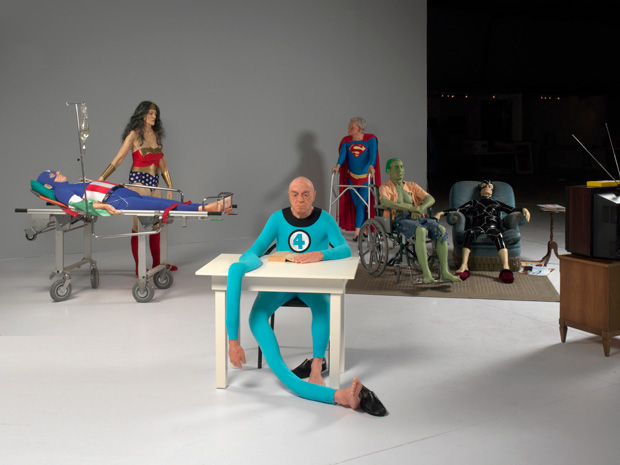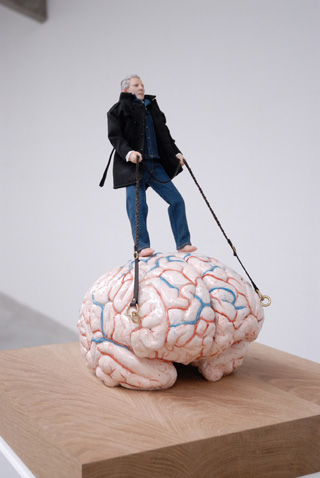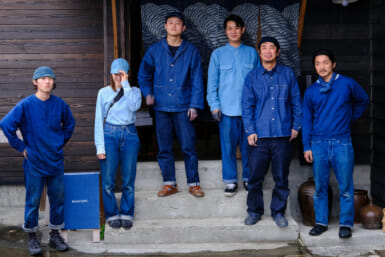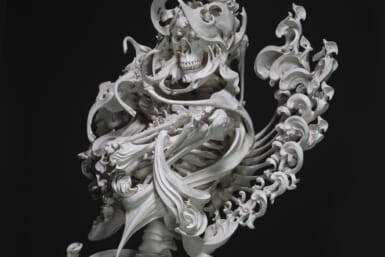by Owen Schaefer
Medicine and Art: Imagining a Future for Life and Love is almost definitely too benign a title for the Mori Art Museum’s current show—but then, perhaps “Memento Mori” wouldn’t have sold as many tickets. The show careens between the curio-cabinet and the medicine cabinet, treating the audience to relentless reminders of mortality, prescribed with only a modicum of humor. It’s a dark ride, and the future for love is a pit-stop at best.
Medicine and Art is largely an exhibition of medicine-related pieces from the Wellcome Trust’s collection of art and artifacts. The trust’s founder, Henry Wellcome, was an obsessive collector of medical objects and books, but was most interested in anthropology. Wellcome’s grand plan was to eventually turn his museum of medicine into a “museum of man.” But after his death in 1936, it was decided that the value of the collection was greater in focusing on medicine alone.
The same narrowing of focus is something that Medicine and Art could also have benefited from. The Wellcome Trust’s collection is enormous, and choosing items for overseas shows can’t be easy. But the organizers here seem to have aimed for a kind of greatest-hits approach along with a few added works from various other sources, and thematically, the show is…overstuffed.
There are, however, ideas to be explored outside of the dustier examples of prosthetic limbs and grim Victorian surgical implements. And at a few points, the show makes successful leaps between its contemporary art holdings and its morbidly fascinating artifacts.
For example, in Sense, Annie Cattrell takes three-dimensional representations of the sections of brain activity that ‘light up’ when one of the five senses is active, casting them in color in five clear blocks of acrylic. The brain is not visible—only its activity, essentially capturing the five senses in their most basic representation. Yet there are mirrors of this in early, more macabre paintings of the inner body: women in living poses dissected to display the womb, and, to a less wince-inducing degree, Leonardo da Vinci’s careful studies of the skull and lungs. While Cattrell’s work is less invasive, it still harkens to the artist’s desire to depict the unseen.
Damien Hirst’s Surgical Procedure (Maia) is a photorealistic painting of an operating theater in which Hirst’s wife is undergoing a C-section procedure. The image is not particularly graphic, but as a work from a contemporary artist who thrives on controversy, it is rendered almost conventional when viewed against the long tradition of surgery-theater paintings that come before it.
As you may imagine, this is not a show for the faint-of-heart. There is no shortage of surgical images, which only serve to set the mood for later works in which the words ‘human remains’ occasionally appear as a creative medium. In Alvin Zafra’s Argument from Nowhere, the artist has ground a human skull to powder against several meters of sandpaper, displaying the result as though it were a work of abstract expressionism. Another room is filled by images from Walter Shels, who juxtaposes the before-and-after photographs of terminally ill patients on their deathbeds.
And Patricia Piccinini’s Game Boys Advanced will raise the hair on your arms with its shockingly realistic sculptures of prematurely aging children busily engaged with a video game.
It’s not all horror; there are moments of humor and even tenderness. Still, while many of the works are wonderful individually, the show fails to create connections that could have made it a much healthier exhibition.
Show: Medicine and Art: Imagining a Future for Lifeand Love (to Feb 28) Gallery: Mori Art Museum (Roppongi station)
Hours: 10am–10pm (to 5pm Tue) Admission: ¥1,500
Tel: 03-5777-8600 www.mori.art.museum












